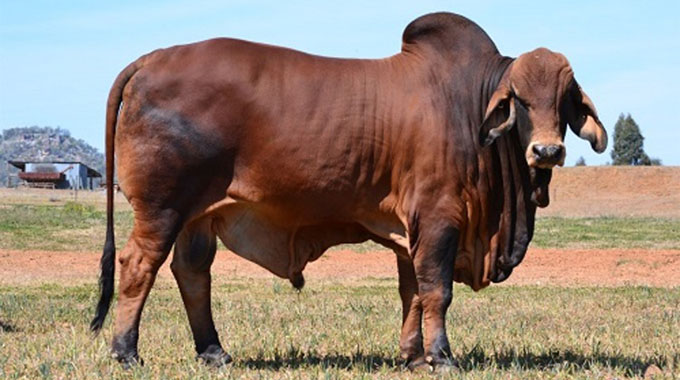Livestock disease management vital

Elita Chikwati Senior Agriculture Reporter
The coming of the rainy season brings relief and joy to most farmers across the length and breadth of the country.
But this joy can be shortlived or tinkered with headaches to livestock farmers who lose their stock to disease outbreaks.
The rainfall season is characterised by soil diseases and tick-borne diseases.
In the current 2018 – 2019 cropping season, farmers have so far lost over 50 000 cattle to tick-borne diseases.
The losses can continue to grow if no due attention is taken by the farmers to control the diseases.
Some smallholder farmers have been hit badly, losing their entire stock. The worst affected districts include Goromonzi, Marondera, Wedza, Buhera, Chivhu, Gutu, Chegutu, Chikomba, Centenary, Bindura and Shamva.
According to the Department of Veterinary Services (DVS) deputy director, Dr Chenjerayi Njagu, the key livestock diseases risks at this time of the year are soil-borne diseases.
These are caused by disease agents found in the soil.
“Animals become particularly prone to these diseases, as there is shortage of pasture in most areas and animals feed on very short grass and tree leaves. This forces them to ingest soil in the process and with it disease-causing agents that may be in the soil,” he said.
“These diseases can also come from water sources that are usually muddy at this time of the year as surface water sources dry up.”
Major soil borne diseases that occur in Zimbabwe are anthrax, black leg and botulism.
Foot and mouth disease (FMD) is another major problem at this time of the year as animals move long distances in search of pasture close to wildlife areas.
“This increases interaction with wild buffaloes, which are the reservoir for FMD virus. This year the DVS has also experienced an unusually high incidence of tick borne diseases due to interruptions experienced in the supply of dipping chemicals for the national dipping programme,” he said.
Tick-borne diseases are caused by deadly blood parasites spread from one animal to another by ticks.
The tick-borne diseases that affect livestock in Zimbabwe are January, Red water, Gall sickness, heart water and they account for 20 to 30 percent of recorded cattle deaths annually.
The peak period for tick borne diseases is in the hot wet season, which presents ideal environmental conditions for breeding of ticks.
Farmers are advised to start intensive dipping (weekly dipping) beginning of November to interrupt the breeding cycle of ticks and prevent build up tick population in the veld.
The DVS encourages farmers to take their livestock to all dipping sessions provided for by Government in the communal sector, pay their dipping fees to facilitate constant supply of dipping chemicals and not to move tick infested cattle from one area to another as this will aid the spread of tick borne diseases.
Commercial farmers should stock adequate dip chemicals for the rain season and ensure they dip their animals weekly, plunge dipping is the best method for tick control.
“Where plunge dip is not available farmers can spray their animals with dip chemicals. When farmers opt to use hand spraying, they need to ensure they have good handling facilities to properly restrain animals and allow thorough wetting of every part of the animal,” said Dr Njagu.
Farmers were also urged to report sick or dead animals to their nearest veterinary office for assistance.
Anthrax is one of the diseases that also affect liveestock during this time of the year.
Very few outbreaks have been experienced this year, all of which were reported in the first quarter of the year.
The DVS attributed the decline in outbreaks to the adequate supply of anthrax vaccine for national vaccination programme, which allowed the department to complete anthrax vaccination in all known anthrax hot spot areas by end of second quarter of the year.
As the country is approaching the anthrax peak period farmers are advised to report animal deaths to their nearest veterinary office for assistance.
All provinces have adequate stocks of vaccines to respond to livestock emergencies.
The department also advises the public not to handle or consume meat from animals that die on their own as they may have contracted the deadly disease.
Black leg is another soil borne disease of livestock that causes huge mortalities in cattle.
The disease causing agent is very similar to the one that causes anthrax and animals usually die in a very short space of time after contracting the disease.
According to experts, the most common clinical sign is swelling in the upper part of the front leg causing the animal to limp for one or two days before it dies.
Like anthrax, blackleg disease also peaks at the end of the dry season beginning of rain season.
This is one of major killer diseases of cattle in the dry season. Farmers are urged to make sure their animals are vaccinated by end of June.
Vaccines are available from commercial veterinary drug outlets throughout the country.
Lumpy skin disease is a mosquito borne disease that causes multiple small lumps all over the body of the animal.
The pick period for the disease is the middle of the rainy season coinciding with the pick mosquito season.
Affected animals usually do not feed well and lose weight and become the source of infection for other animals in the herd and surrounding areas. The disease is easily preventable through vaccination.
There is, however, no Government sponsored vaccination program for the disease and farmers are expected to by their own vaccines from veterinary drug outlet and seek assistance their local veterinary extension officer for vaccination of their animals.
Farmers who have not yet vaccinated their herds are urged to do so as soon as possible before the start of the rain season.
Internal parasites are also a big challenge to animal health especially in the rainy season as the environmental conditions are optimal for their multiplication.
If not properly de-wormed, animals may fail to realise their full potential in weight gain from the abundant grazing available at this time of the year.
Cattle should be de-wormed at least three times per year, just before onset of the rains between October and November, in the middle of the rainy season between January and February and at the end of the rainy season between April and May.







Comments